Any hyperlinks to on-line shops ought to be assumed to be associates. The corporate or PR company supplies all or most assessment samples. They don’t have any management over my content material, and I present my sincere opinion.
I not too long ago reviewed the superb Ugreen NASync DH4300 Plus. As a long-time Unraid consumer, I didn’t count on to love it as a lot as I did, as a result of restricted app availability, however I leaned into the performance it does have, and have continued to make use of it since. This has now grow to be my NAS, which I take advantage of for photograph backups, backing up my cloud drives, and utilizing the Rsync performance to again up my servers.
The NASync DH2300 wasn’t fairly as spectacular as a result of lack of Docker, which limits its performance, however because of its extremely low value, it stays an incredible possibility for somebody in search of a fundamental NAS, both as a starter system or for fundamental backup features (and maybe as a substitute for Google Photographs).
Ugreen has now despatched me the NASync DXP4800 Plus to assessment. That is one other 4-bay NAS, and it runs the identical UGOS, with Docker, because the DXP4800 Plus, but it surely makes use of an Intel Pentium Gold 8505 as an alternative of a Rockchip ARM chipset, making it way more highly effective. It then has 2x M2 slots for caching, 8GB DDR5 (expandable to 64GB) and twin Ethernet ports, with one being 10GbE and the opposite 2.5GbE.
These specs, particularly the 10GbE port, make this an ideal alternative for my ageing TerraMaster F4-422. It has served me nicely, particularly once I turned it into an Unraid NAS, however the Intel Celeron J3455 and DDR3 imply it was fairly underpowered, particularly if I needed to take advantage of the 10GbE port.
Associated Evaluations
Ugreen NASync DXP4800 Plus vs NASync DXP4800 vs NASync DH4300 Plus Specification
Ugreen has three 4-bay fashions sitting at completely different value factors.
| Mannequin | DXP4800 Plus | DXP2800 | DH4300 Plus | DH2300 |
| Value | £539.99 | £263.99 | £305.99 | £169.99 |
| Drive Bays | 6 (4+2) | 4 (2+2) | 4 (4+0) | 2 (2+0) |
| SATA Onerous Drive Slots | SATA 4-Bays | SATA 2-Bays | SATA 4-Bays | SATA 2-Bays |
| M.2 NVMe Drive Slots | 2x M.2 Slots | 2x M.2 Slots | – | – |
| Most Storage Capability | 136T (30T4+8T2) | 76T (30T2+8T2) | 120T (30T*4) | 120T (30T*2) |
| CPU | Intel Pentium Gold 8505 | Intel twelfth Gen N100 | A76+A55 8 Core | Rockchip RK3576 6 Core |
| RAID Mode | JBOD/Primary/RAID0/RAID1/RAID5/RAID6/RAID10 | JBOD/Primary/RAID0/RAID1 | JBOD/Primary/RAID0/RAID1/RAID5/RAID6/RAID10 | JBOD/Primary/RAID0/RAID1 |
| HDMI | 4K 60Hz | 4K 60Hz | 4K 60Hz | 4K 60Hz |
| Commonplace Reminiscence | 8GB DDR5 | 8GB DDR5 | 8GB LPDDR4X | 4GB LPDDR4X |
| Most Reminiscence Growth | 64GB | 16GB | – | – |
| LAN Port | 1x 2.5GbE, 1x 10GbE | 1x 2.5GbE | 1x 2.5GbE | 1x 1GbE |
Unboxing / Design
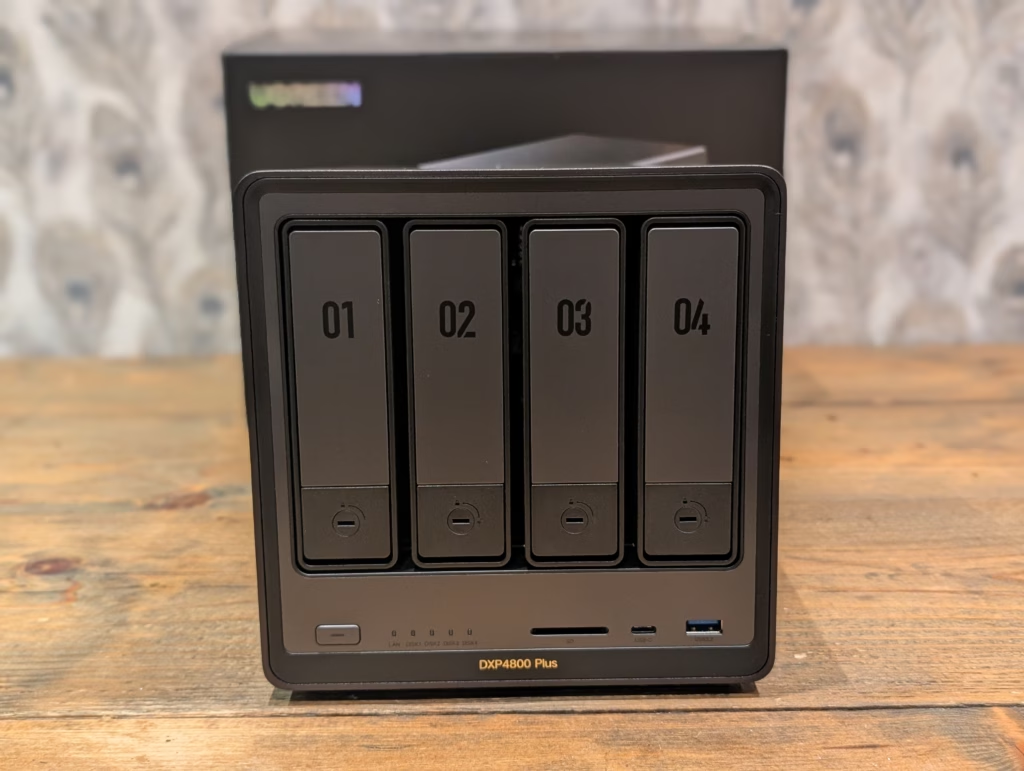
The NAS is nicely made, with a predominantly aluminium chassis which provides a superior constructed high quality to the extra reasonably priced ARM primarily based fashions I’ve reviewed from Ugreen.
The unit itself measures roughly 26cm x 18cm x 18cm, making it barely taller and narrower than some rivals just like the Synology DS920+ or QNAP TS-464.
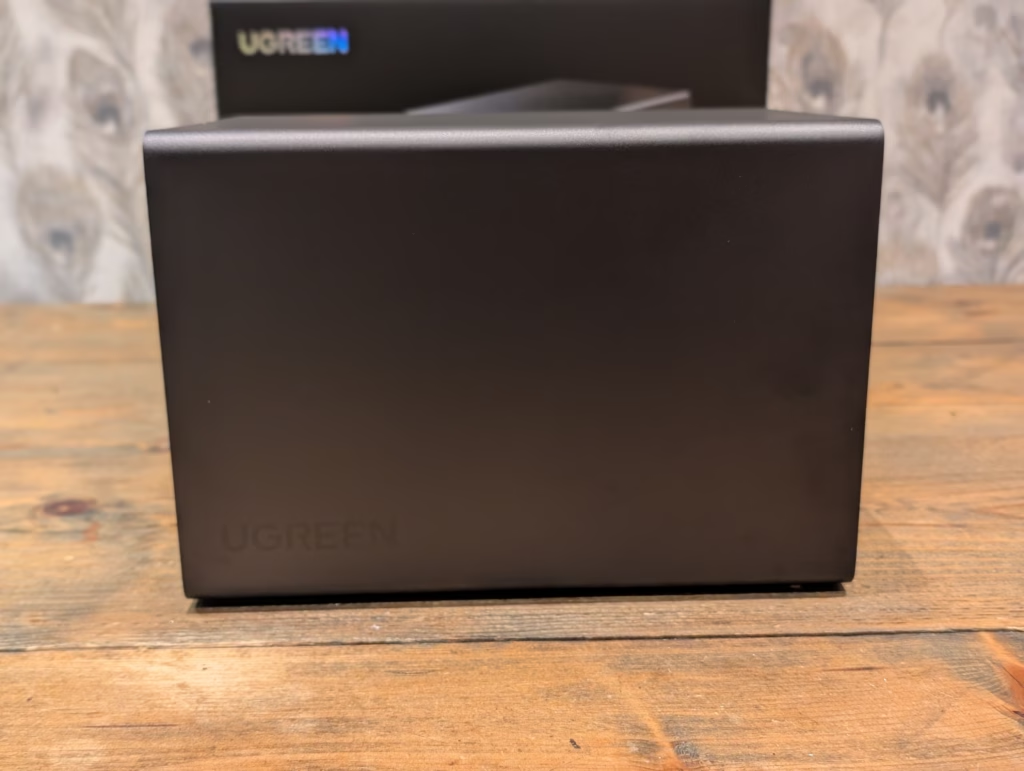
The entrance panel homes the 4 drive bays, every clearly numbered. The bay design is works nicely. While the plastic frames do really feel barely much less sturdy than the steel trays you’d discover on a Synology or higher-end QNAP unit, I’ve had no points slotting them out and in. Every tray has a sliding mechanism that opens to permit 3.5-inch drives to clip into place with out instruments. 4 pins on every tray align with the mounting holes on normal exhausting drives, holding them securely. For two.5-inch drives or SSDs, you’ll want screws, and Ugreen features a small screwdriver within the field.
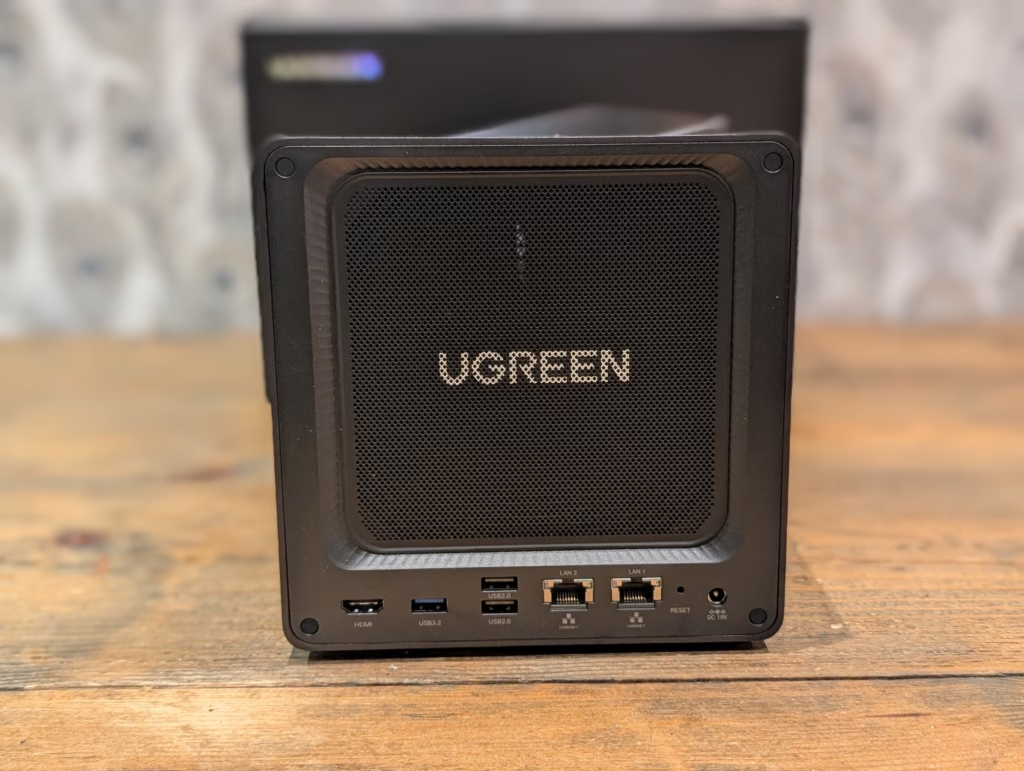
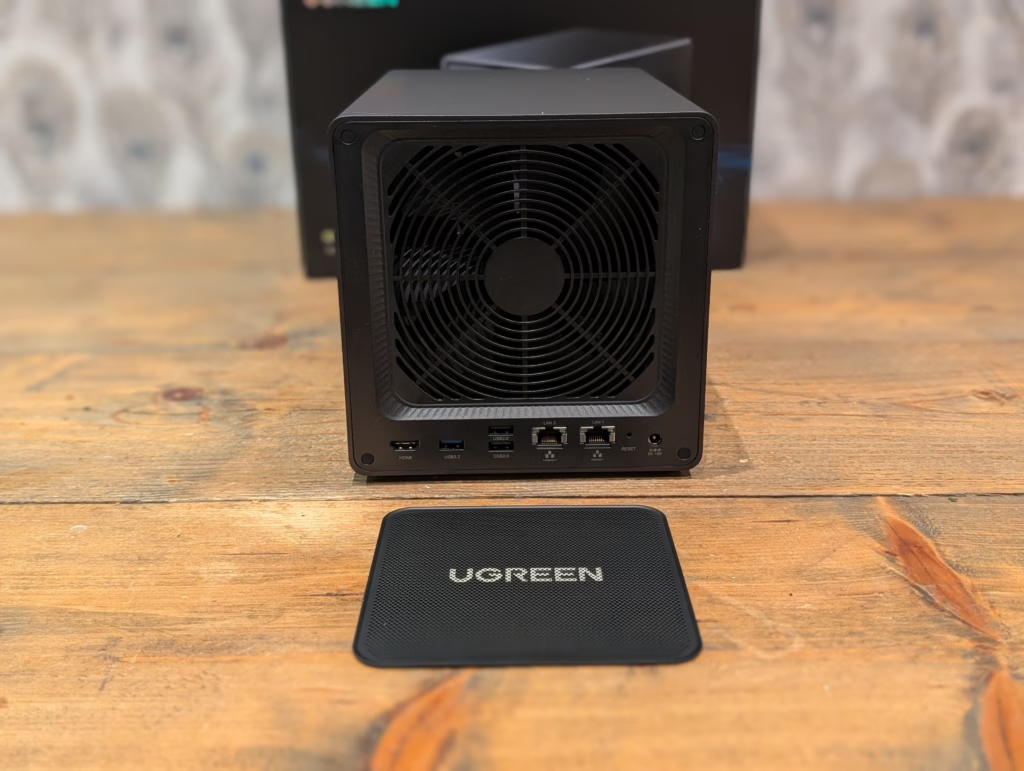
Every bay has a locking mechanism with included keys, which is a pleasant contact should you’re involved about bodily safety. The ability button sits on the entrance left, with LED indicators for energy, community exercise, and drive standing. These LEDs may be scheduled to show off throughout sure hours by way of the software program, which I respect – nothing worse than vivid LEDs in a bed room or quiet workplace area.

On the entrance, you’ll additionally discover a USB-C port, USB-A port, and an SD card reader. I can’t stress sufficient how helpful the SD card slot is. Having the ability to pop an SD card straight into the NAS for direct backup or ingest is genuinely handy, even when it’s not one thing I do day by day.
The rear panel is the place issues get extra fascinating. There’s an HDMI port supporting 4K at 60Hz, three USB ports (one USB 3.2 Gen 1 and two USB 2.0), the 2 Ethernet ports (2.5GbE and 10GbE), and the ability connector for the exterior PSU. The inclusion of an exterior energy provide is one among my few gripes with the design. Ugreen makes wonderful energy adapters, so I used to be shocked they went with a non-branded HuntKey unit rated at 150 watts. It really works completely tremendous, but it surely looks like a missed alternative for model consistency.
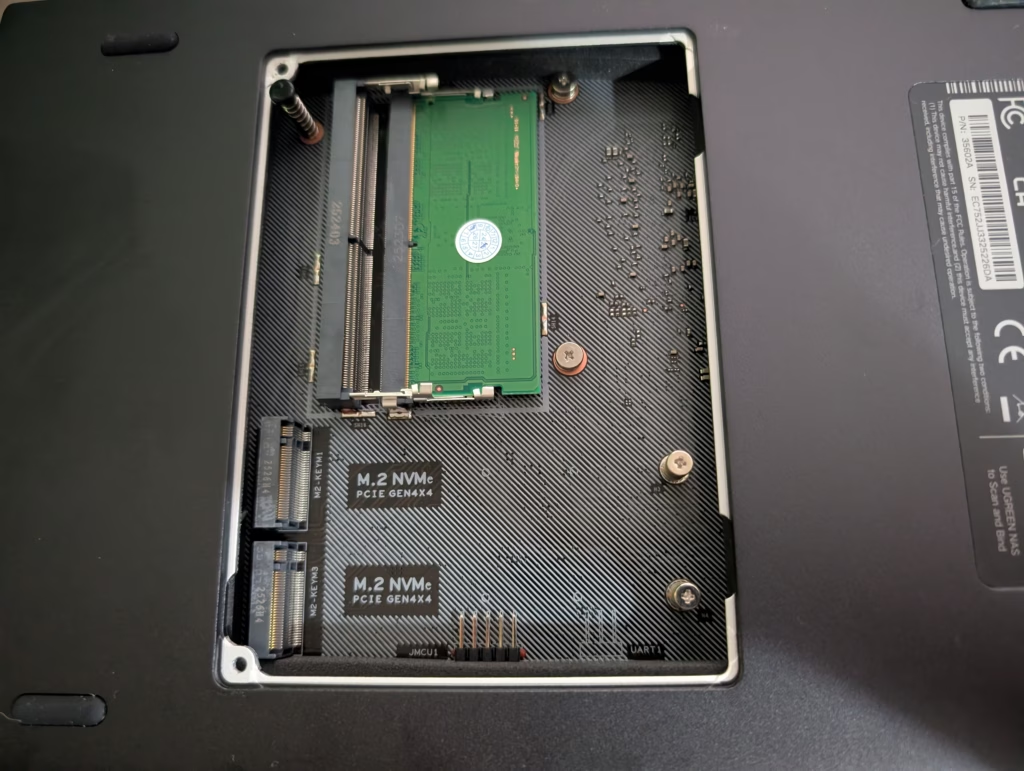
What I actually respect is the magnetic, detachable mud filter overlaying the 140mm rear fan. That is normal on first rate PC instances however surprisingly uncommon on NAS models, regardless of them working 24/7 and accumulating much more mud than a typical PC. The fan itself is related by way of a regular 4-pin connector, that means it’s simply replaceable if wanted – once more, one thing you don’t typically see on client NAS gadgets.
Accessing the M.2 slots and RAM requires eradicating a panel on the bottom, held by simply two screws. It’s easy, although you’ll must be a bit cautious about cable administration and guaranteeing the thermal pads (included within the field) make correct contact with the steel base for warmth dissipation. Ugreen contains thick thermal pads particularly for this goal, which reveals good consideration to element.
Set Up

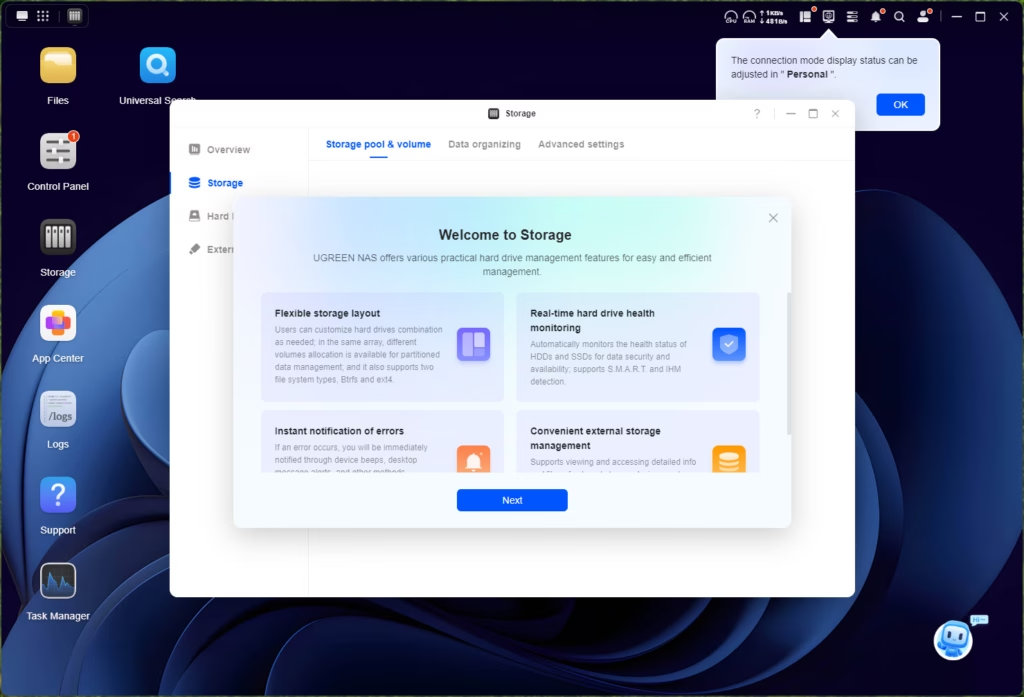
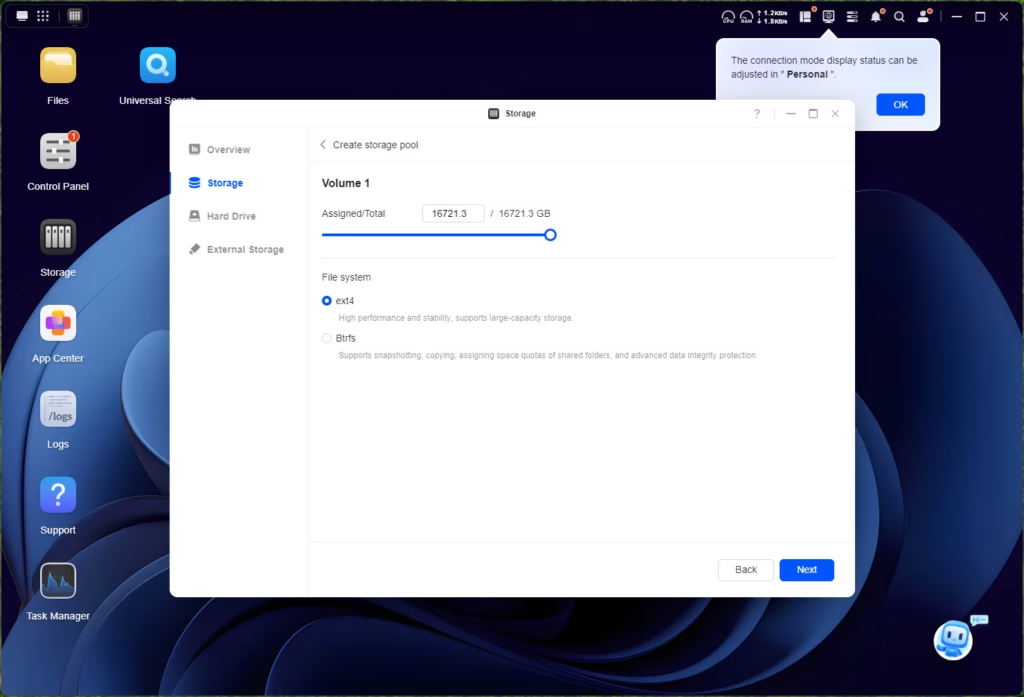

The set-up course of is identical as the opposite fashions I’ve reviewed. You possibly can go to the IP tackle or use the Ugreen app.
The setup wizard walks you thru the fundamentals: creating an administrator account, organising community preferences, and configuring your first storage pool. Importantly, Ugreen doesn’t pressure you to create a cloud account simply to make use of the system, although you’ll be able to allow their UGREENlink distant entry service if desired. This can be a level of their favour in comparison with some producers who’re more and more pushing cloud companies.
When creating your storage pool, you’re given the usual RAID choices: JBOD, Primary, RAID 0, RAID 1, RAID 5, RAID 6, and RAID 10. For a 4-bay system, RAID 5 provides a superb steadiness of capability (75% of complete storage) and safety (can survive one drive failure), while RAID 6 sacrifices extra capability (50% of complete storage) however can survive two drive failures. Given the scale of contemporary drives and the appreciable time required to rebuild a failed drive in a RAID 5 array, RAID 6 is value critical consideration regardless of the capability hit.
The file system selection is between Btrfs and Ext4. I’d advocate Btrfs for many customers, because it helps snapshots natively. These snapshots present safety towards unintended file deletion and even ransomware assaults, as you’ll be able to roll again to a earlier state. It’s not a alternative for correct backups, but it surely’s a superb security internet.
One factor to concentrate on: the preliminary RAID synchronisation can take appreciable time relying on the scale of your drives.
How one can arrange SSD cache
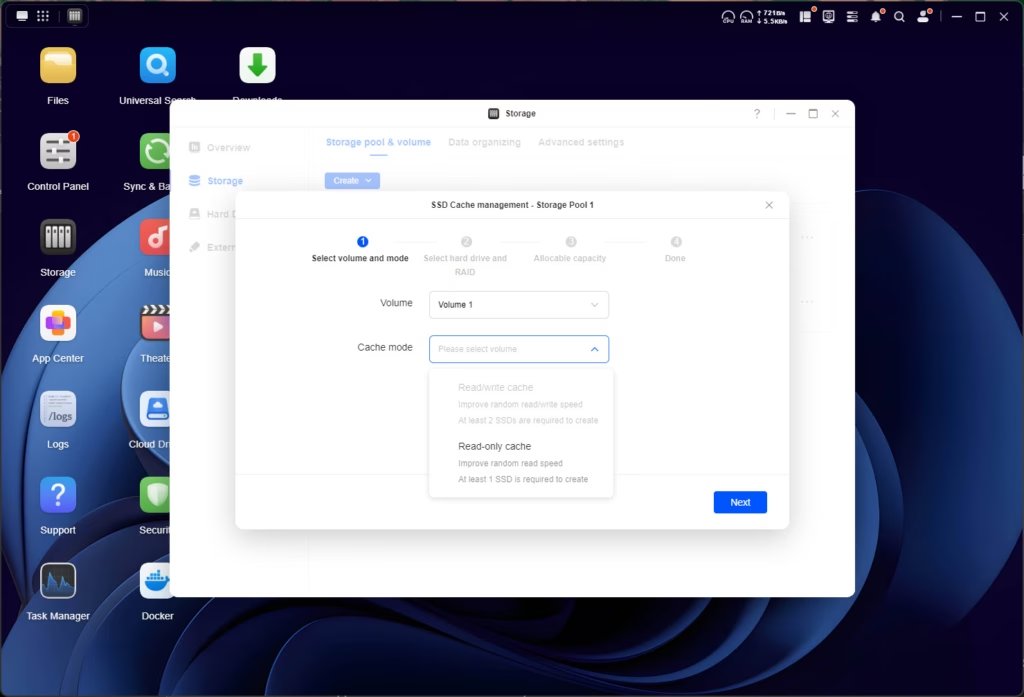
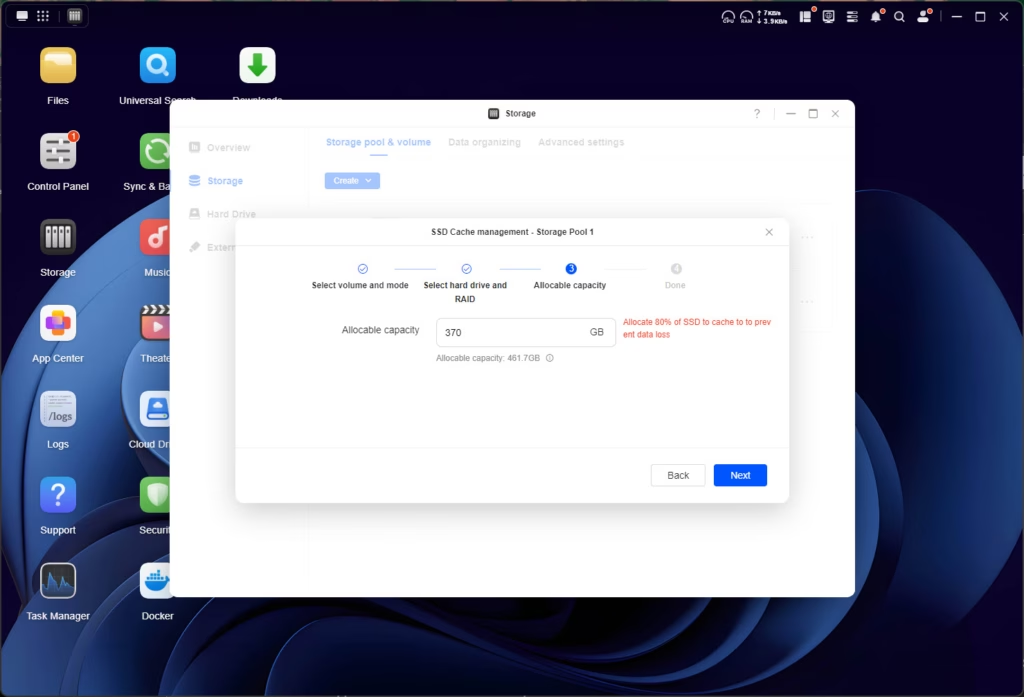
The Ugreen helps SSD caching, which took me a couple of minutes to work out methods to arrange. When you arrange your storage pool, you want to go into Storage, the place it reveals your swimming pools, then the three dots to the appropriate of the storage pool have the choice to allow SSD cache.
The cache system works greatest with two NVMe drives. They work independently from one another for the learn and write cache. In the event you solely have one drive, you solely get learn cache (which is outwardly how SSD caching ought to work).
Ugreen additionally prompts you to under-provision the cache drive to keep away from the danger of knowledge loss. It is best to solely set the capability to 80% of the SSD storage capability.
The M.2 slots are correct Gen 4 x4 connections, which is genuinely spectacular at this value level. Many NAS models, even from Synology and QNAP, downgrade M.2 slots to Gen 3 x2 and even x1 to save lots of on PCIe lanes. The complete Gen 4 x4 means these slots can theoretically deal with as much as 8000MB/s, although in observe you’ll be restricted by different components just like the SATA controller and community speeds.
Can I set up Unraid, TrueNAS, or Proxmox as an alternative?
Whereas I’ve been impressed with UGOS, it lacks the vary of functions and suppleness that’s potential with Unraid, TrueNAS or Proxmox.
Whereas the ARM-based Ugreen NAS gadgets are unlikely to be simply transformed to a special OS, it’s potential with the Intel-based choices.
I transformed my outdated TerraMaster to Unraid, and it’s probably I’ll do the identical right here.
It is a little more sophisticated than simply swapping the USB thumb drive like I did with my TerraMaster, however nonetheless fairly easy.
I gained’t cowl the method on this assessment; I’ll write a further submit at a later date. Nevertheless, it seems that the method entails going into the BIOS to disable the NVME boot drive (containing the UG OS). Then from there, the Unraid arrange course of is the same old.
It’s value noting that Ugreen’s guarantee coverage relating to third-party working methods has been a degree of rivalry. Initially, there have been ideas that putting in another OS would void the guarantee. Nevertheless, Ugreen has since clarified that the guarantee covers {hardware} solely, which might stay legitimate whatever the OS put in. They do warn, fairly, that utilizing various working methods carries dangers together with potential knowledge loss and compatibility points.
For many customers, I’d say UGOS is completely enough for fundamental NAS duties. However if you wish to run advanced Docker setups, intensive virtualization, or choose the options of extra mature NAS working methods, the choice to put in options is there. The Intel platform makes this significantly extra viable than ARM-based models.
UGOS UI and Settings
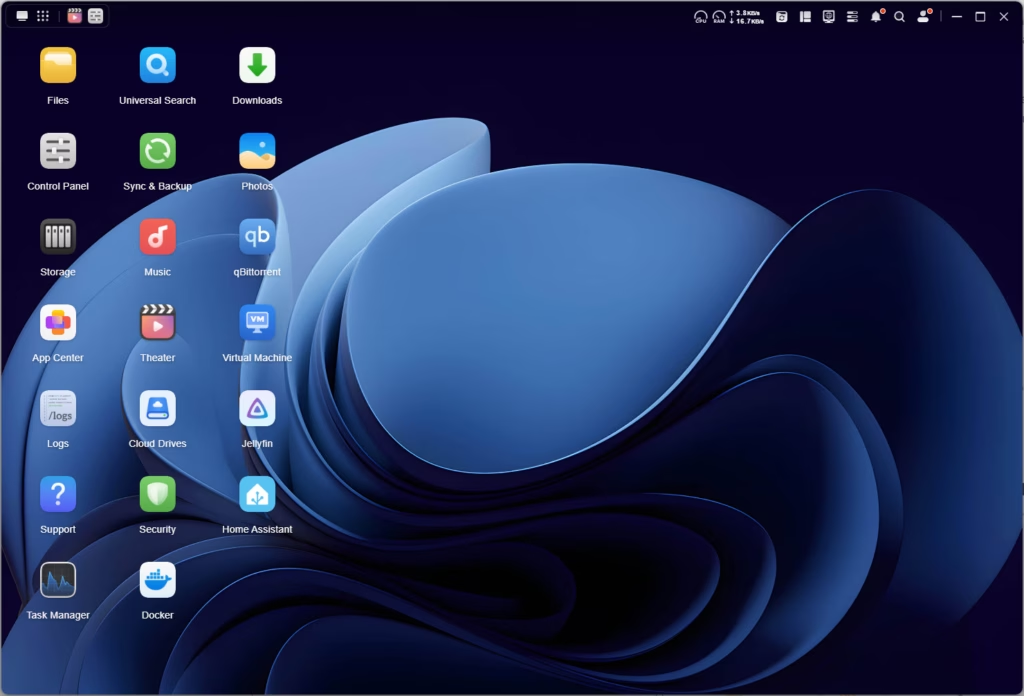
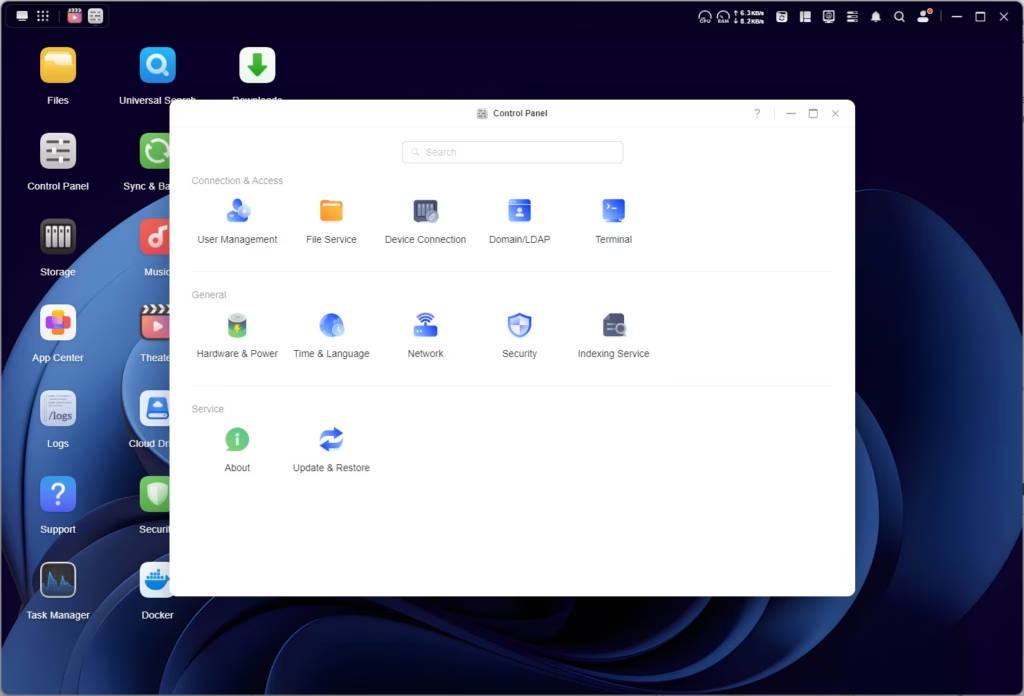


The NASync DXP4800 Plus has the identical OS and performance because the NASync DH4300 Plus, it’s simply way more highly effective and quicker.
Due to this fact, I gained’t cowl UGOS extensively, however focus extra on the improved efficiency in comparison with the NASync DH4300 Plus.
The interface itself shouldn’t be dissimilar Synology’s DSM, giving the looks of a PC desktop, or maybe Mac OS with the highest bar.
A number of functions can run concurrently, which does give a correct multitasking really feel quite than simply switching between completely different pages.
The dashboard supplies a transparent overview of system standing: CPU and RAM utilization, community site visitors, storage capability, and working companies. From right here, you’ll be able to entry all main features: File Supervisor, Storage Supervisor, Management Panel, Bundle Middle (for apps), and numerous built-in functions.
UGOS Obtainable Apps

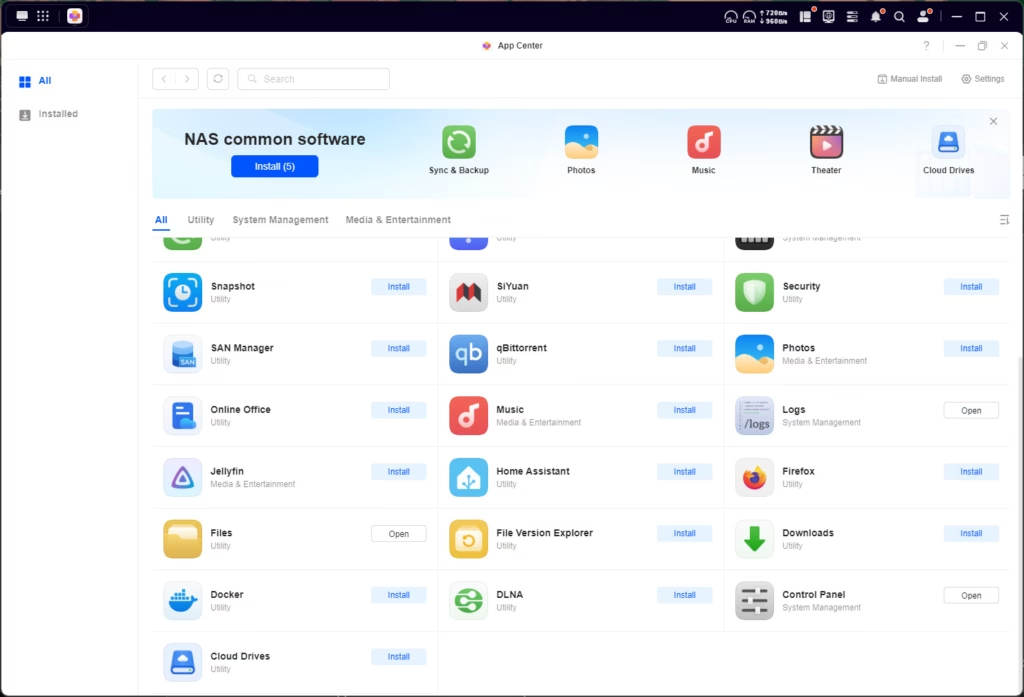
The obtainable apps stay the identical because the DH4300, with one exception: Digital Machines.
The app choice is OK at greatest. You’ve gotten many of the apps you’ll need, particularly in case you are utilizing it for conventional NAS features.
However, it does lack some common choices for media and downloading, such because the arr-tack, Sabnzbd and Plex media server. I’d additionally wish to see issues like PiHole, AdGuard House and Unbound for DNS, in addition to choices for VPN. Whereas the distant entry works nicely on this, I’d choose to have one thing like Tailscale working natively on it.
The inclusion of Docker does mitigate this to a big extent. While there’s no Portainer or related web-based Docker administration device put in by default, you’ll be able to set up one by way of SSH comparatively simply. I managed to get Dockge working with out an excessive amount of fuss, which supplies a clear interface for managing Docker containers and compose recordsdata. The training curve is steeper than Synology’s Container Station or QNAP’s Container Station, but it surely’s manageable should you’re snug with fundamental command-line operations.
The Picture app deserves particular point out. It’s clearly Ugreen’s try to offer a Google Photographs various, with AI-powered face recognition, object detection, and scene categorisation. The interface is clear and the performance is beneficial for private photograph libraries. Nevertheless, the AI fashions aren’t as refined as what you’d get from Google, Apple, and even Synology’s Photographs. In testing with a library of a number of thousand photos, the article recognition was hit-and-miss – it appropriately recognized perhaps 60-70% of apparent objects however missed loads of clear cases.
That stated, the truth that this runs completely on-device is a privateness win. Your pictures aren’t being uploaded to cloud servers for processing, which can enchantment to privacy-conscious customers. The search performance works nicely sufficient for fundamental queries like discovering pictures by date, location, or the folks in them.
Digital Machine
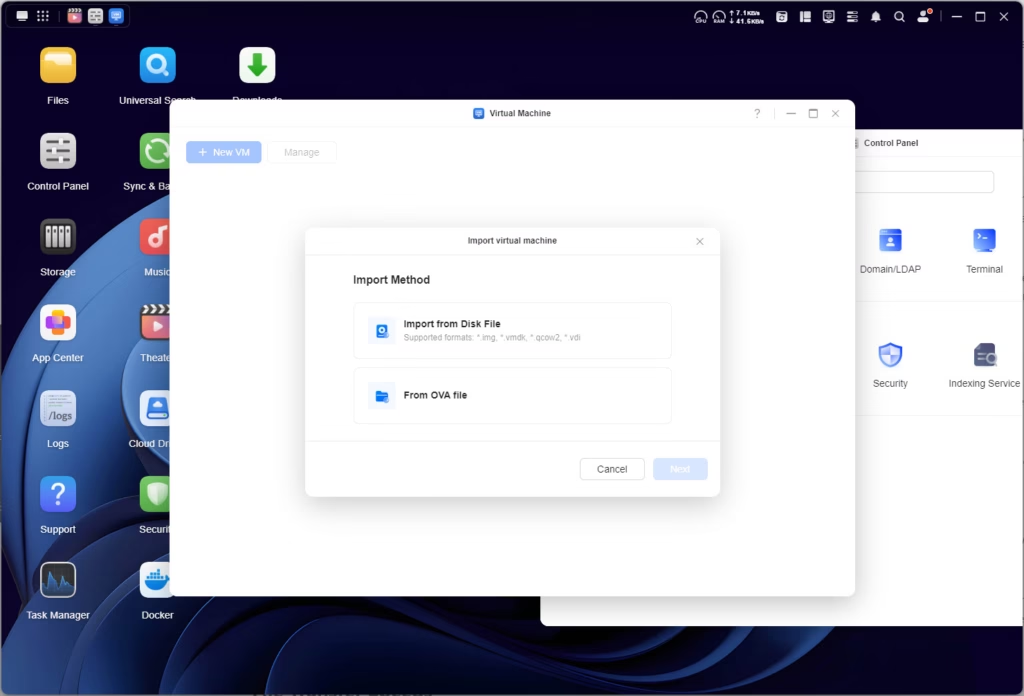


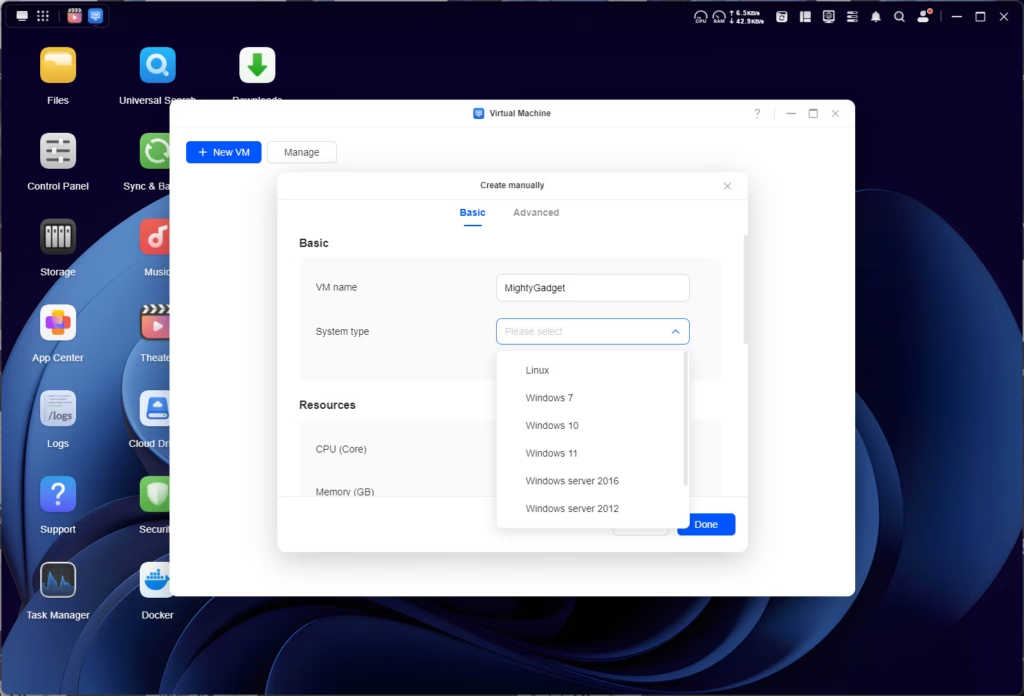


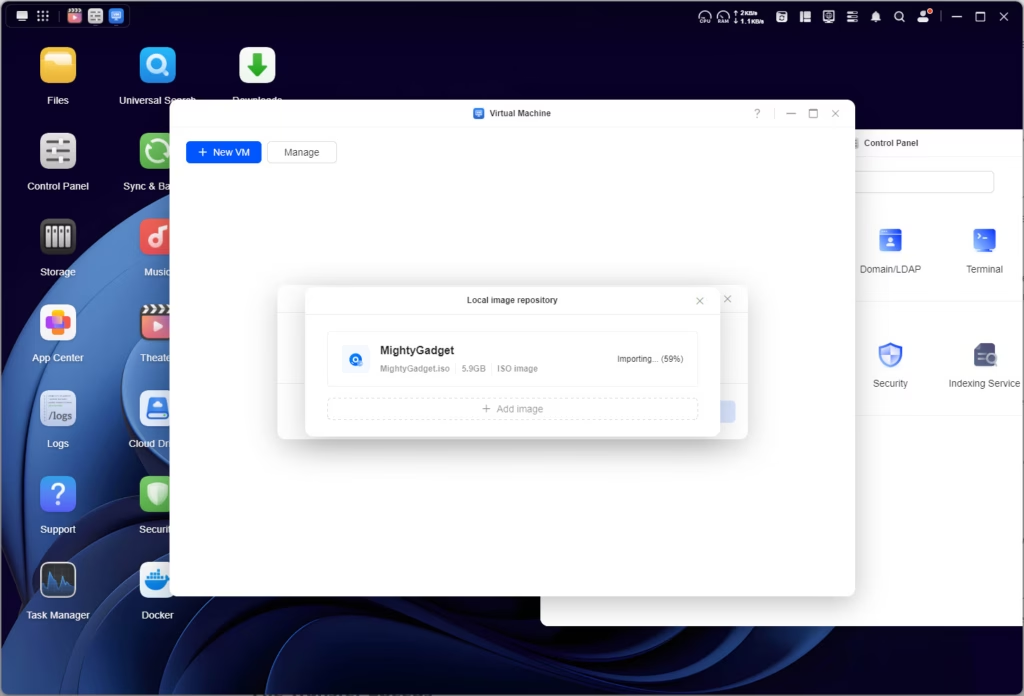
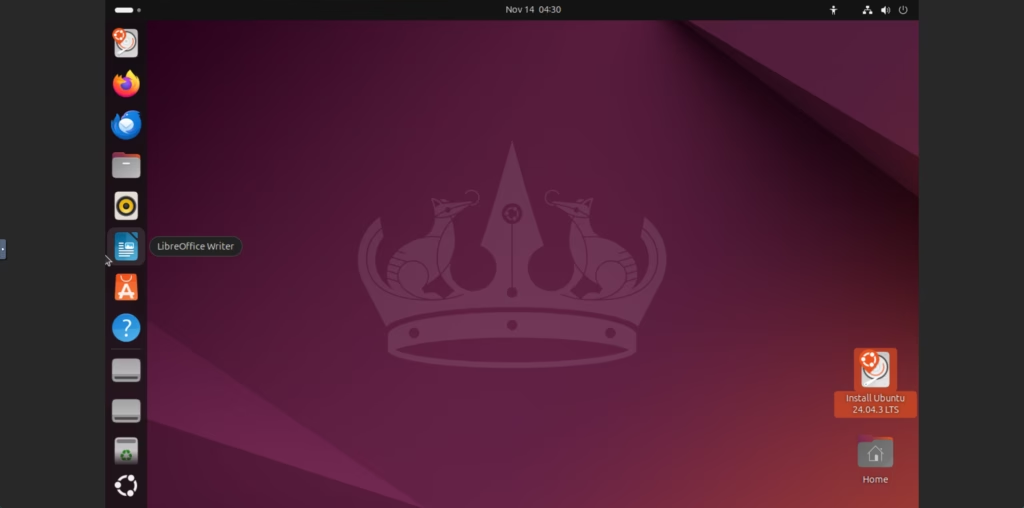
The digital machine operate has large potential however it is going to be restricted on this NAS. The specs are nice for a NAS and media server, however it would be best to be cautious with the sources you assign to a VM, and have lifelike expectations of efficiency.
The VM supervisor is practical however fundamental. You possibly can create VMs from ISO recordsdata, allocate CPU cores and RAM, and configure community settings. I examined with a light-weight Debian set up, allocating 2 CPU cores and 4GB of RAM, and it ran acceptably for fundamental duties. Nevertheless, this isn’t Proxmox – don’t count on to run Home windows VMs with demanding functions or a number of VMs concurrently with out critical efficiency compromises.
The Pentium Gold 8505’s hybrid structure (one efficiency core and 4 effectivity cores) means it will possibly deal with gentle virtualisation duties, however you’re not going to be working a full growth surroundings or something equally demanding. For many customers, I’d say the VM performance is greatest reserved for particular use instances – maybe working a selected utility that must be always-on, or testing one thing in an remoted surroundings.
Establishing a VM is a straightforward course of; you’ll be able to arrange a contemporary VM with an ISO or import an present disk file. When the VM is about up, you’ll be able to entry the GUI by way of your browser.
UGOS Docker
Docker stays the identical because the DH4300. Doubtless my lack of expertise with Docker, however I’ve by no means discovered Docker administration inside NAS working methods; I all the time appear to make a large number of the amount and port mapping.
With the DH4300, I managed to get Dockge up and working by way of SSH and this has been working completely, you simply must be cautious about setting the volumes to file directories that you could simply entry.
The problem with UGOS is that the native Docker interface is pretty bare-bones. You possibly can pull photos and create containers, however the quantity mapping and community configuration require cautious consideration. In the event you map volumes incorrectly, you would possibly discover your containers can’t entry the information they want, or worse, you’re storing container knowledge in places that aren’t backed up or are tough to entry.
My advice: should you’re snug with fundamental Linux instructions, SSH into the NAS and use Docker Compose recordsdata to outline your containers. This provides you full management and makes it simpler to doc your setup. In the event you’re much less snug with command-line instruments, the built-in interface works, however take your time to know quantity mapping earlier than deploying necessary containers.
File Switch Speeds
The 10GbE connection ought to theoretically permit speeds as much as 1,250MB/s. In observe, with a RAID 5 array of spinning exhausting drives, I used to be seeing 500-600MB/s, which is respectable and roughly what you’d count on from mechanical drives. The bottleneck right here is the drives themselves, not the community connection.
Now, it’s necessary to place this in context: 500-600MB/s over 10GbE continues to be quicker than what most competing NAS models can obtain at this value level. The TerraMaster F4-424, as an example, doesn’t embody 10GbE in any respect. QNAP’s TS-464 requires an growth card for 10GbE. The truth that Ugreen contains it as normal is important.
Sync & Backup
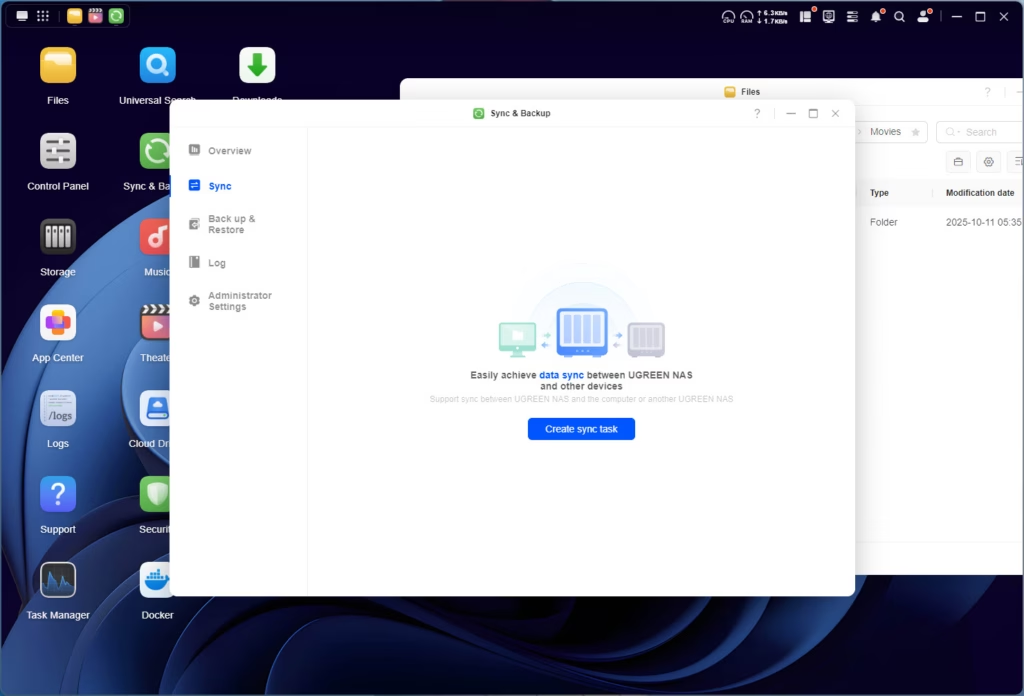
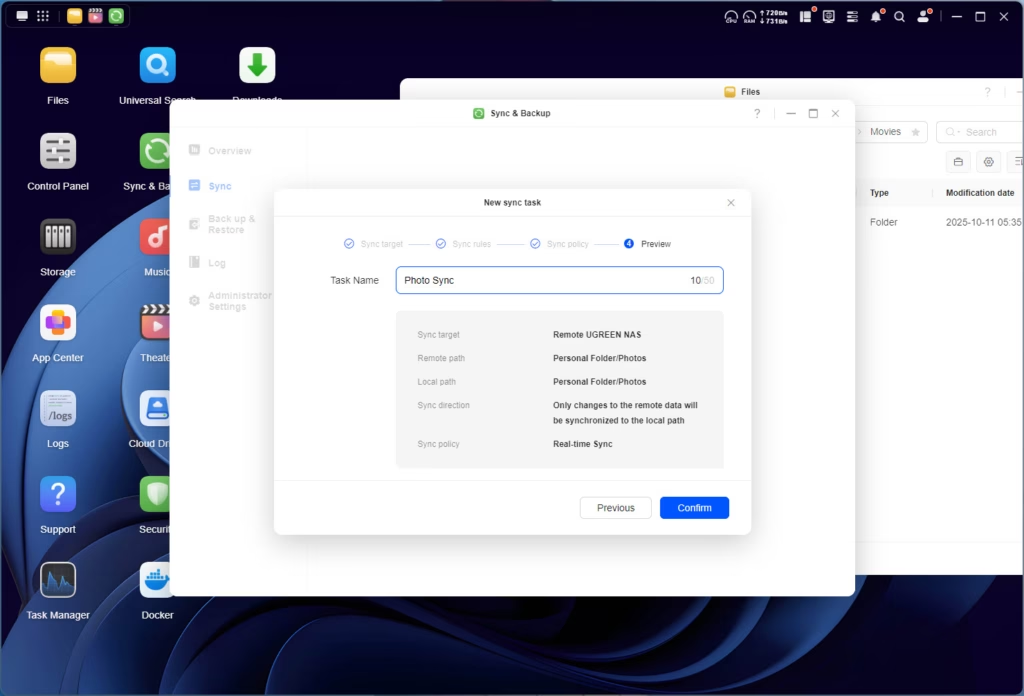
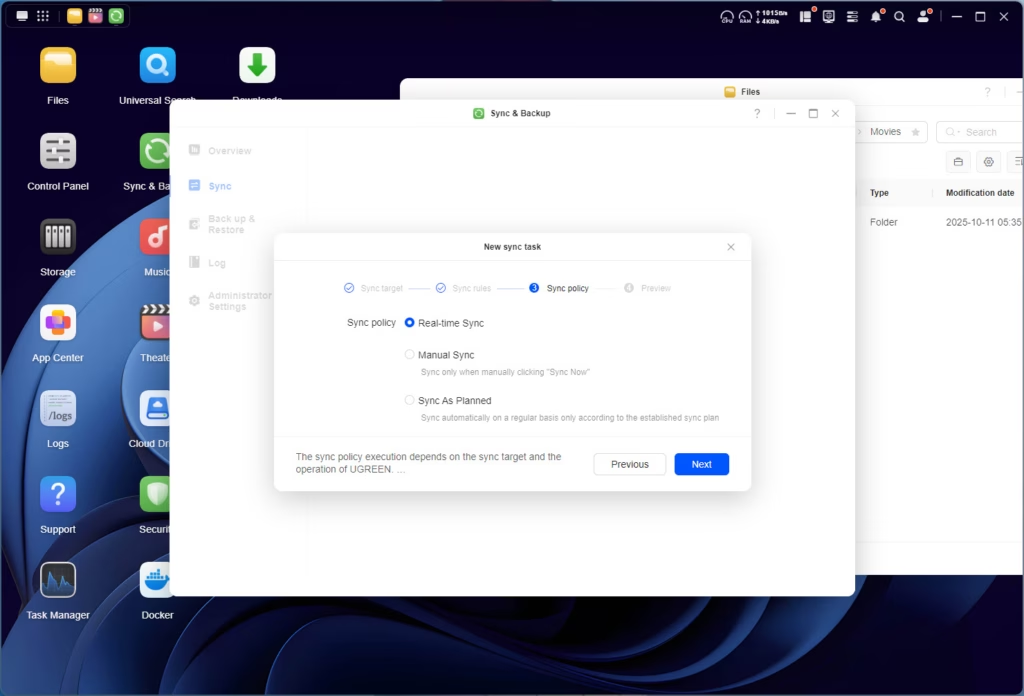
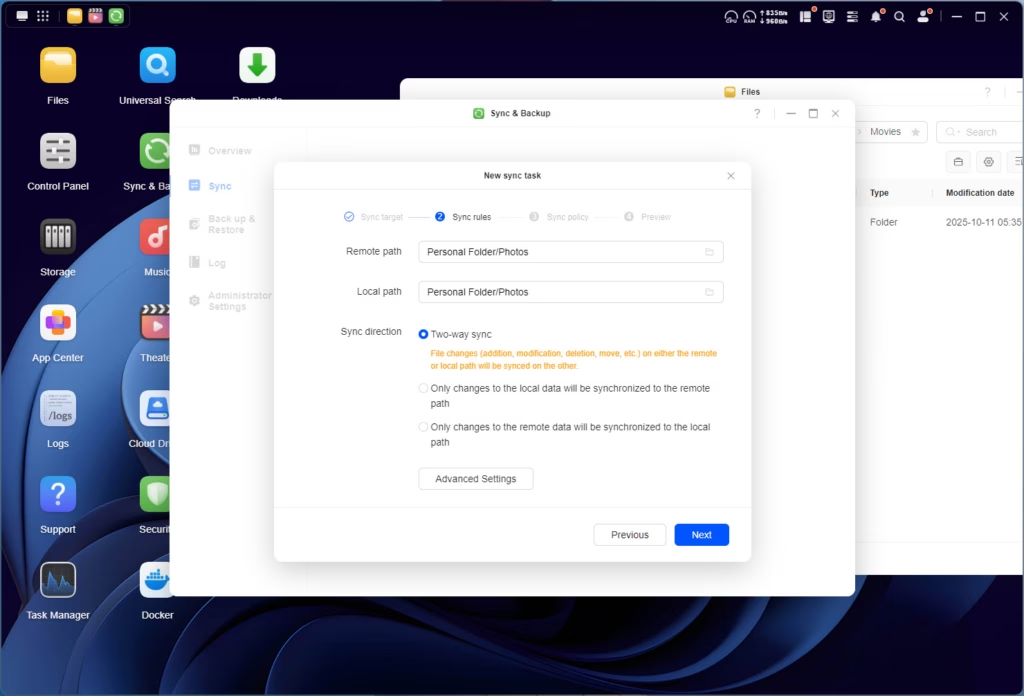
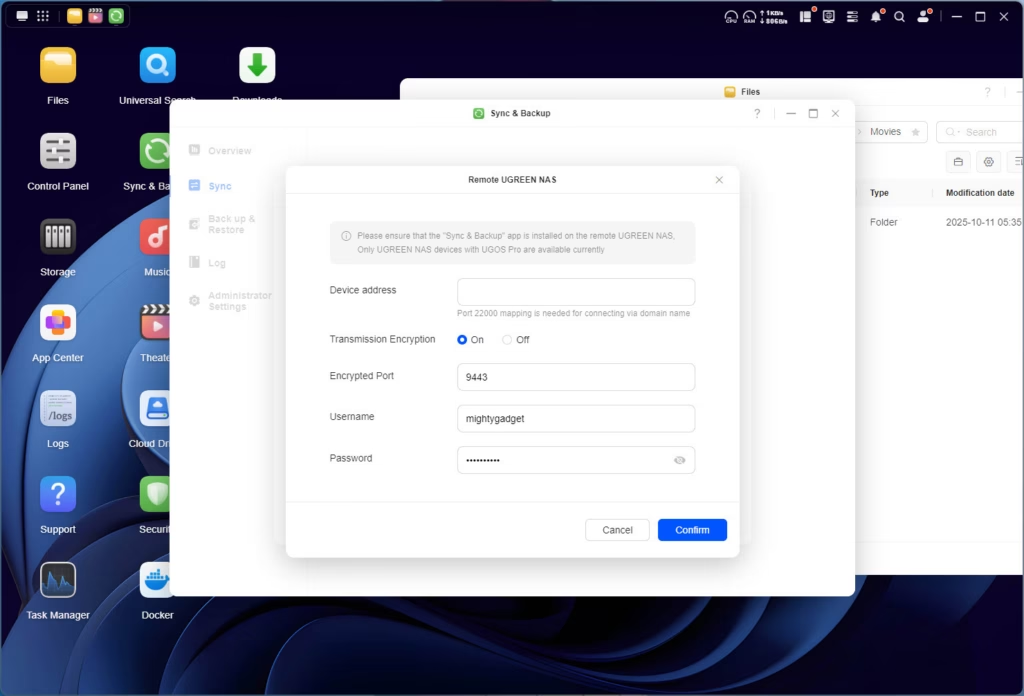
I’ve been utilizing the Sync & Backup utility extensively on the NASync DH4300 Plus.
I take advantage of it for 2 most important features:
- Ugreen app on my cellphone to backup pictures – giving me a superb Google Photographs various.
- Rsync to again up my server – the one draw back to that is that it’s username/password-based, so not as safe as keys.
For this NAS, I made use of the Ugreen-to-Ugreen sync; particularly, I used it to repeat all of the pictures over from my DH4300. I had 340GB of knowledge to switch, with 220,000 pictures, and it labored seamlessly. I didn’t examine how shortly it transferred the recordsdata however inside a couple of minutes it had already moved 35GB of recordsdata.
With that working nicely, I additionally transferred a few of my media library from my Unraid NAS utilizing the Rsync operate, which once more, labored flawlessly.
Jellyfin / Plex Efficiency / {Hardware} Decoding
The Rockchip ARM chipset within the NASync DH4300 Plus was surprisingly good for enjoying media and a few transcoding. Nevertheless, the Intel Pentium 8505 is way more highly effective, and it additionally helps Intel QuickSync, which is thought to be one of the best ways to transcode media.
QuickSync on this CPU, model 8, is identical as within the Rocket Lake CPUs and helps MPEG-2, AVC, VC-1 decode, JPEG, VP8 decode, VP9, HEVC, and AV1 decode in {hardware}.
In sensible phrases, this implies the NAS can hardware-transcode a number of 1080p streams concurrently, or a single 4K HEVC stream right down to 1080p H.264 with minimal CPU utilization. That is excellent for Plex or Jellyfin servers the place not all shopper gadgets can instantly play your media in its native format.
I examined with Jellyfin (since Plex isn’t obtainable within the UGOS app retailer, although it may be put in by way of Docker), and transcoding efficiency was wonderful. A 4K HEVC file transcoded to 1080p H.264 in real-time with CPU utilization barely spiking above 20%. Two simultaneous 1080p transcodes maintained related low CPU utilization.
For many dwelling media server situations, this stage of efficiency is greater than enough. In the event you’re working a Plex server for a big household or good friend group with 5+ simultaneous streams, you may want extra horsepower. However for typical use instances, the Pentium Gold 8505 handles it brilliantly.
One caveat: to allow {hardware} transcoding in Jellyfin by way of Docker, you’ll must cross by way of the iGPU system to the container, which requires some further configuration. This isn’t instantly apparent from the UGOS interface, so it’s possible you’ll must edit the Docker configuration by way of command line or utilizing a device like Portainer.


The built-in media participant on UGOS is surprisingly good, offering related performance to Plex/Jellyfin. With the HDMI out on the NAS, you could possibly, in principle, use this as each your media server and a house theatre PC, and it’s quiet sufficient to take a seat subsequent to your TV with out noticeable fan noise.
Picture App
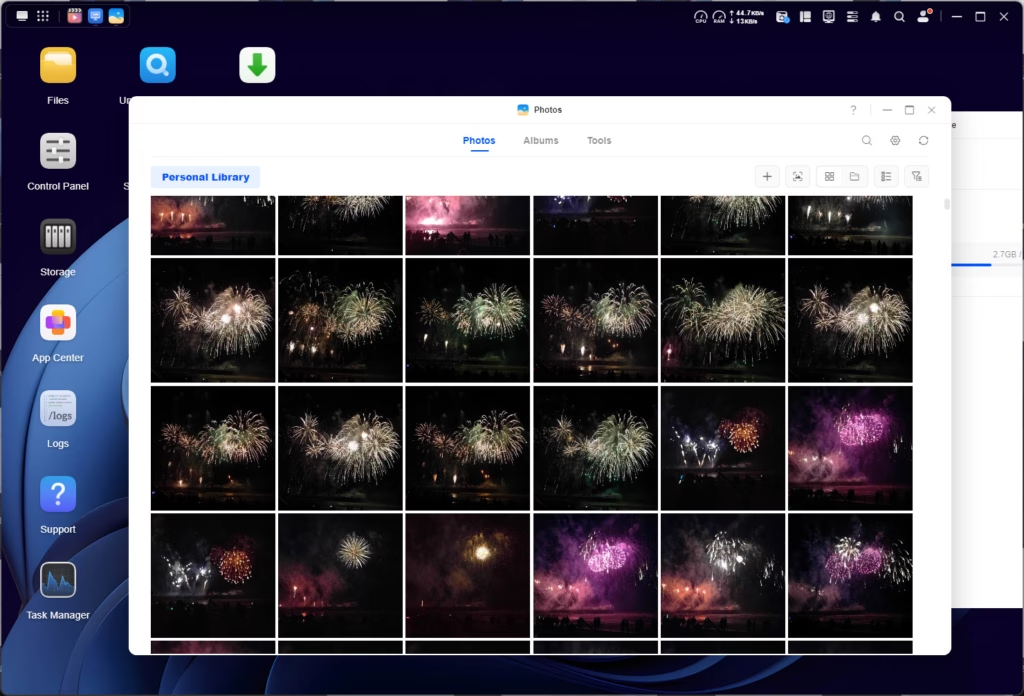
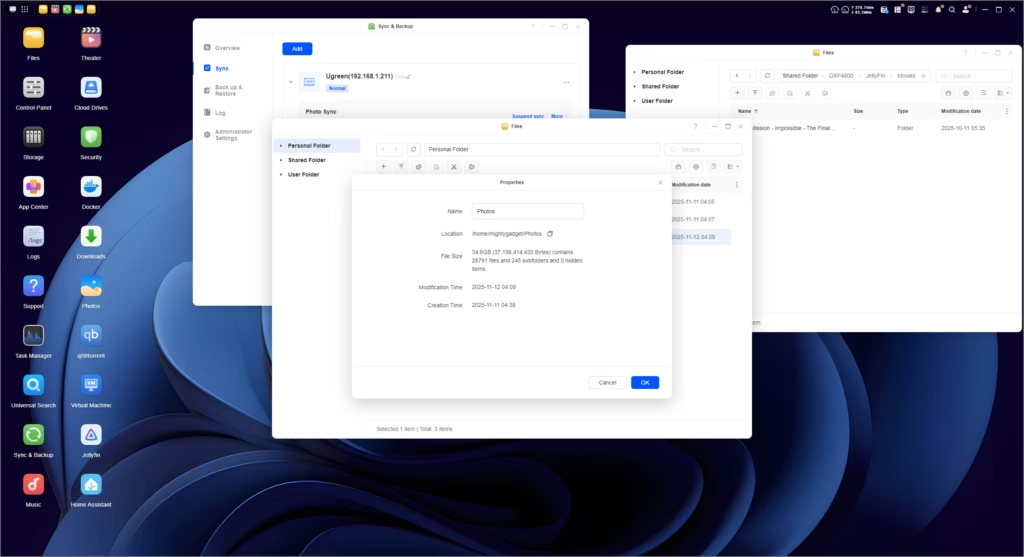
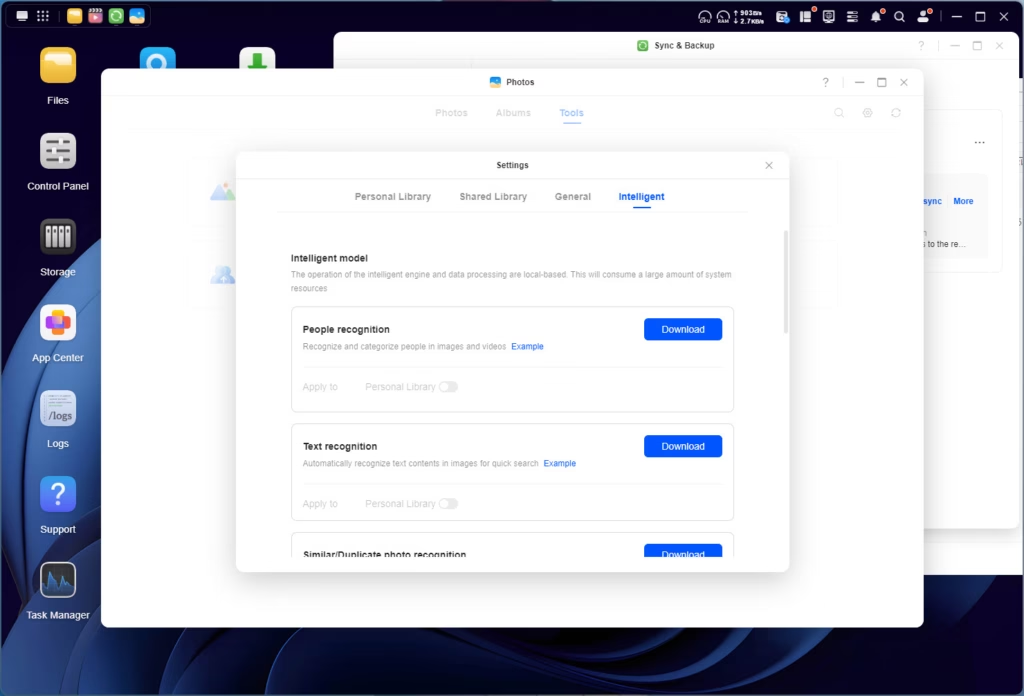

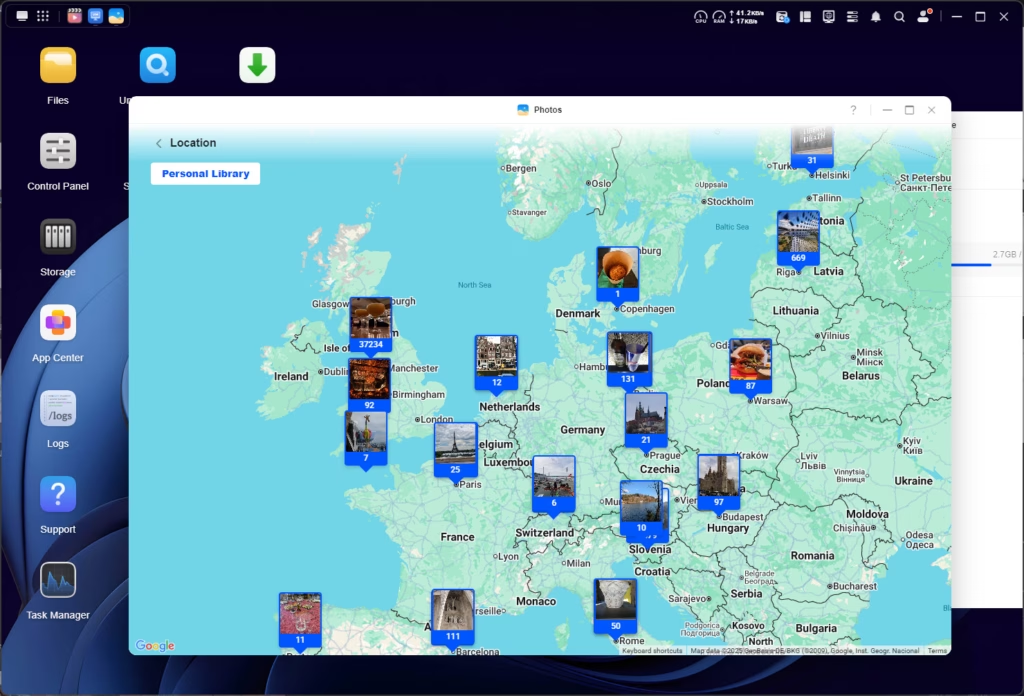
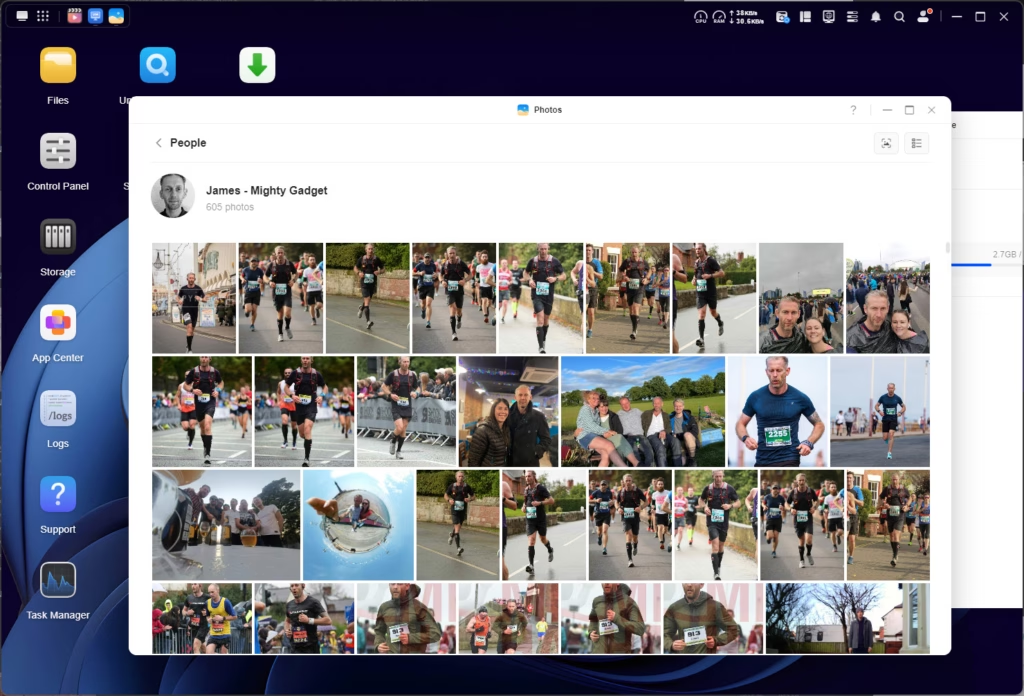

Much like the media efficiency, I used to be wanting to see how the Picture app would carry out with the elevated processing energy. Specifically, the AI options, resembling facial recognition, required lengthy processing instances on the DH4300 Plus.
The very first thing I observed was that there are extra options with the pictures app on this NAS. You now have choices underneath the clever settings for:
- Folks recognition
- Textual content recognition
- Comparable/duplicate recognition
- Scene & object recognition
- Pet recognition – Not obtainable on DH4300 Plus
- Delicate content material – Not obtainable on DH4300 Plus
- This selection permits the NAS to establish blurred photos of something specific.
- Picture recognition – Not obtainable on DH4300 Plus
- This lets you describe a picture and the NAS will attempt to discover it
- Mannequin coaching bundle – Not obtainable on DH4300 Plus
- This selection is especially fascinating, you’ll be able to principally create your individual object recognition by offering no less than 10 pattern pictures
The efficiency enchancment is noticeable. Processing 220,000 pictures for face recognition took about 36 hours on the DH4300 Plus. On the DXP4800 Plus, related processing accomplished in roughly 12 hours. That’s nonetheless a substantial period of time, but it surely’s a major enchancment.
The face recognition works fairly nicely as soon as it’s completed processing. It appropriately recognized faces in about 80% of my take a look at pictures, and grouped them with first rate accuracy. You possibly can then manually appropriate groupings and label faces with names. The interface for that is clear and intuitive.
The semantic search (“discover pictures with canine”, “present me seaside pictures”) is hit-and-miss. It really works nicely for apparent topics and scenes, however struggles with extra summary queries. In comparison with Google Photographs’ AI, it’s noticeably much less succesful, however once more, the privateness good thing about on-device processing is important.
The mannequin coaching bundle is genuinely fascinating. I examined it by coaching a mannequin to recognise my cellphone. After offering about 15 pattern pictures, it may then establish different pictures containing the cellphone with cheap accuracy. This could possibly be helpful for me as my pictures are cluttered with product pictures.
House Assistant
I didn’t use House Assistant on the DH4300, as I’ve it put in on a mini PC inside Proxmox. However, as this NAS is extra highly effective, I made a decision to check it out.
House Assistant is offered as a Docker container, and set up was easy following the usual Docker set up technique. Efficiency was acceptable for fundamental use – the interface was responsive, automations ran with out problem, and integrating numerous good dwelling gadgets labored as anticipated.
My mini PC has a extra highly effective CPU than this NAS, however this will surely carry out higher than the Rasbery Pi which many individuals use for House Assistant.
qBittorrent
The qBittorrent app is offered within the UGOS app retailer, and it really works completely nicely for managing torrent downloads. The online interface is the usual qBittorrent UI, which is practical if not notably fairly.
One factor to be aware of: ensure you configure the obtain listing rigorously. By default, it might attempt to obtain to a location that isn’t a part of your most important storage pool, which may trigger confusion. Set it to a devoted folder inside your most important storage pool for simpler administration.
Obtain speeds are good, simply saturating a quick broadband connection. The 10GbE/2.5GbE community port ensures that community pace gained’t be a bottleneck for nearly any dwelling web connection.
For extra superior torrent automation (Sonarr, Radarr, and many others.), you’ll wish to use Docker containers quite than the built-in qBittorrent app, as this offers you extra flexibility and higher integration with the remainder of your media automation stack.
Energy Draw / Vitality Effectivity / Noise
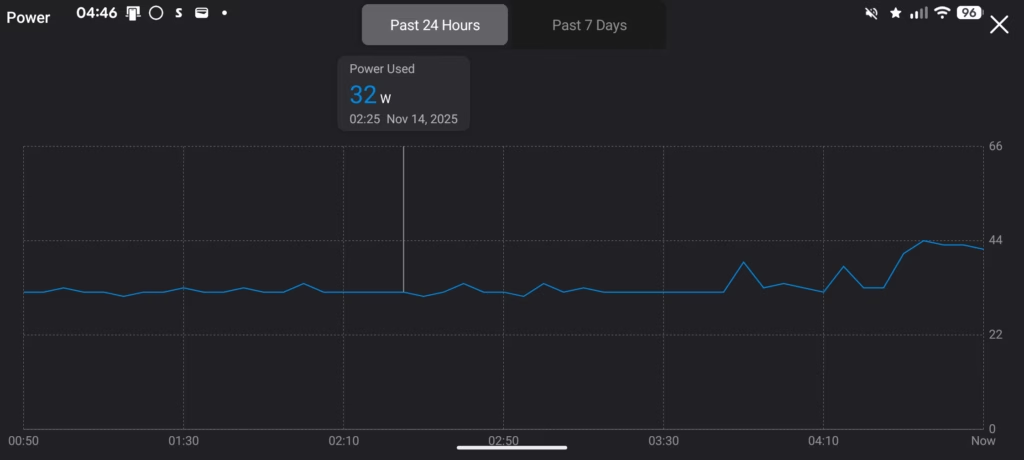
I connected the NAS to my favorite good plug, which incorporates energy monitoring, the TP-Hyperlink Tapo P110M. It’s Matter-enabled and integrates completely with House Assistant.
Throughout gentle load, when it was transferring pictures over to the brand new NAS, it consumed between 39W and 45W, making it extraordinarily energy environment friendly. Granted, that’s nonetheless fairly much more than the DH4300, which used round 21-22 watts, for related workloads.
Taking part in a 4K copy of Mission Unattainable utilizing the media participant barely modified the ability draw. I feel I noticed it go as much as 47W, but it surely was virtually the identical because the file switch by itself.
Taking part in one other file on the similar time, however on Jellyfin, elevated the ability barely, with it hovering round 45W more often than not, however as much as 49W.
historic knowledge, the ability draw peaked at 64W, which I feel coincided with me eradicating the SSD learn cache and enabling learn/write cache with two M.2 drives.


Within the night, energy utilization dropped to 32W. You possibly can cut back your energy utilization through the use of the scheduled start-up and shutdown function inside the {hardware} and energy options. You can too tweak energy additional by altering the exhausting drive sleep instances, that are 20 minutes by default; you’ll be able to drop it as little as 10 minutes.
To place this in context: at 40W common consumption, working 24/7, you’re taking a look at about 350kWh per 12 months. Within the UK, at present electrical energy costs (round 24p per kWh), that’s roughly £84 per 12 months in electrical energy prices. That’s noticeably increased than the DH4300’s ~£45 per 12 months, however nonetheless cheap given the elevated efficiency.
The Synology DS920+ (with Intel Celeron J4125) usually consumes 30-35W underneath related masses, so the DXP4800 Plus is barely extra power-hungry. The TerraMaster F4-424 with Intel N95 makes use of round 30W. These variations is probably not large in absolute phrases, however they do accumulate over years of steady operation.
Noise ranges are good. The 140mm fan runs quietly at idle, barely audible from greater than a metre away. Below load, it does spin up and turns into extra noticeable, but it surely’s by no means intrusive. The drive noise is extra important than the fan – the WD Purple Plus drives I examined with are fairly quiet, however you’ll hear the occasional search noise, particularly throughout intensive operations like RAID rebuilds or giant file transfers.
Value and Different Choices
The Ugreen NASync DXP4800 Plus has an RRP of £600, however on the time of writing, it was obtainable from Ugreen and Amazon for £540.
The ARM-based NASync DH4300 Plus I beforehand reviewed has an RRP of £360 and is offered for £306.
Then the NASync DXP4800 has an RRP of £480 and is offered for £408.
In the event you have been to maneuver up a stage, there’s the NASync DXP6800 Professional, which has 6-bays, a robust Intel i5 1235u, twin 10GbE, and twin Thunderbolt 4 docks. As you’d count on, the value jumps fairly a bit to £1000 RRP obtainable or £850.
Minisforum entered the NAS scene not too long ago, the N5 AI NAS is offered for £550 and has an AMD Ryzen 7 255, 5 bays, 3xM2, 10Gb+5GbE, plus an OCuLink port. It’s wonderful {hardware} for the cash, however the OS, Miniscloud, is meant to be fairly poor with no WebUI and no terminal entry.
TerraMaster might be the primary competitor, however they don’t have a like-for-like various. The F4-425 Plus is a bit cheaper, however has a decrease spec Intel N150 and twin 5GbE ports, although it ups the specs with 3x M2 slots, and 16GB DDR5 RAM.
Or the F4-424 Max, is £700, with an Intel i5-1235U, 8GB DDR5, 2xM2 and twin 10GbE ports.
In the event you have been to go together with Synology, for round £550, you may get the DiskStation DS925+, which has an AMD Ryzen V1500B, 4GB DDR4 ECC (expandable to 32 GB), 2x M2 slots, and twin 2.5GbE. The {hardware} is considerably inferior to Ugreen, however Synology DSM is the gold normal of NAS working methods and is arguably superior to self-build choices like Unraid.
Total
Ugreen has actually nailed the {hardware} elements of their NASync, providing nice {hardware} for large worth for cash.
Whereas UGOS stays in its infancy and will do with much more growth, particularly the obtainable apps, it’s truly fairly good and ought to be tremendous for many customers.
It does fall quick for issues like downloading media and different common self-hosting companies. However it’s potential to beat this problem with Docker, and in case you are courageous sufficient, setting issues up by way of SSH.
I’d say the NASync DXP4800 Plus is the candy spot when it comes to value and efficiency for his or her whole vary, however in actuality, you could possibly argue every NAS is a candy spot for its pricing.
The DH4300 Plus is sort of £200 cheaper, and in case you are glad to make use of UGOS, it’s a nice, reasonably priced, low-powered NAS.
The NASync DXP4800 Plus, buys you extra flexibility, particularly as you’ll be able to set up a special OS, which I’d regard as a significant promoting level. In order for you an reasonably priced Unraid NAS, this might make a tremendous selection. Or, should you follow UGOS, it’s nonetheless an incredible NAS with some wonderful options, particularly, the Picture app.
Total, I’ve been extremely impressed with what Ugreen has completed with the NASync vary, within the area of a few years, they’ve managed to simply compete with TerraMaster, which has been a preferred possibility for reasonably priced NAS gadgets for years, and much like Ugreen, an incredible selection if you wish to swap to Unraid/TrueNAS.
Whereas the Ugreen vary is smaller than TerraMaster, I’d argue tthat hey have superior merchandise. Offering higher {hardware} for related costs.
Whereas Synology might dominate on the software program entrance, Ugreen, Terramaster, and even Minisforum are embarrassing them with considerably higher {hardware} at cheaper price factors.
I feel the NASync DXP4800 Plus is an ideal possibility for anybody in search of a robust NAS with a multi-gig community at an inexpensive value, and there’s not a lot else that competes with it.
My ranking could also be barely biased, because the OS does want to enhance to essentially compete with the larger gamers, however I’ve primarily based my ranking on the general worth for cash, which I feel is unbelievable.
Ugreen NASync DXP4800 Plus Evaluate
Abstract
The Ugreen NASync DXP4800 Plus delivers excellent {hardware} efficiency for the value, making it probably the most compelling mid-range NAS choices at present obtainable. With its Intel Pentium Gold processor, 10GbE networking, NVMe caching, and wonderful construct high quality, it provides a stage of functionality that rivals or surpasses many established manufacturers at an analogous or increased value. Whereas UGOS nonetheless lags behind Synology and QNAP in app help and polish, the inclusion of Docker, improved AI-driven photograph options, and the choice to put in various working methods considerably prolong its usefulness. For customers wanting highly effective {hardware}, multi-gig networking, and the pliability to broaden or swap OS sooner or later, this is a wonderful selection that stands out strongly in its value vary.
Execs
-
Excellent {hardware} and 10GbE at a aggressive value
-
Glorious construct high quality and quiet operation
-
Helps Docker and various working methods
-
Robust media efficiency with Intel QuickSync
Cons
-
UGOS app retailer and interface nonetheless restricted
-
Makes use of an exterior PSU quite than inside
-
Lacks built-in Plex and a few frequent NAS utilities
I’m James, a UK-based tech fanatic and the Editor and Proprietor of Mighty Gadget, which I’ve proudly run since 2007. Captivated with all issues expertise, my experience spans from computer systems and networking to cellular, wearables, and good dwelling gadgets.
As a health fanatic who loves working and biking, I even have a eager curiosity in fitness-related expertise, and I take each alternative to cowl this area of interest on my weblog. My numerous pursuits permit me to carry a novel perspective to tech running a blog, merging life-style, health, and the newest tech developments.
In my tutorial pursuits, I earned a BSc in Info Techniques Design from UCLAN, earlier than advancing my studying with a Grasp’s Diploma in Computing. This superior research additionally included Cisco CCNA accreditation, additional demonstrating my dedication to understanding and staying forward of the expertise curve.
I’m proud to share that Vuelio has persistently ranked Mighty Gadget as one of many high expertise blogs within the UK. With my dedication to expertise and drive to share my insights, I purpose to proceed offering my readers with participating and informative content material.
Final replace on 2025-11-14 / Affiliate hyperlinks / Photographs from Amazon Product Promoting API
